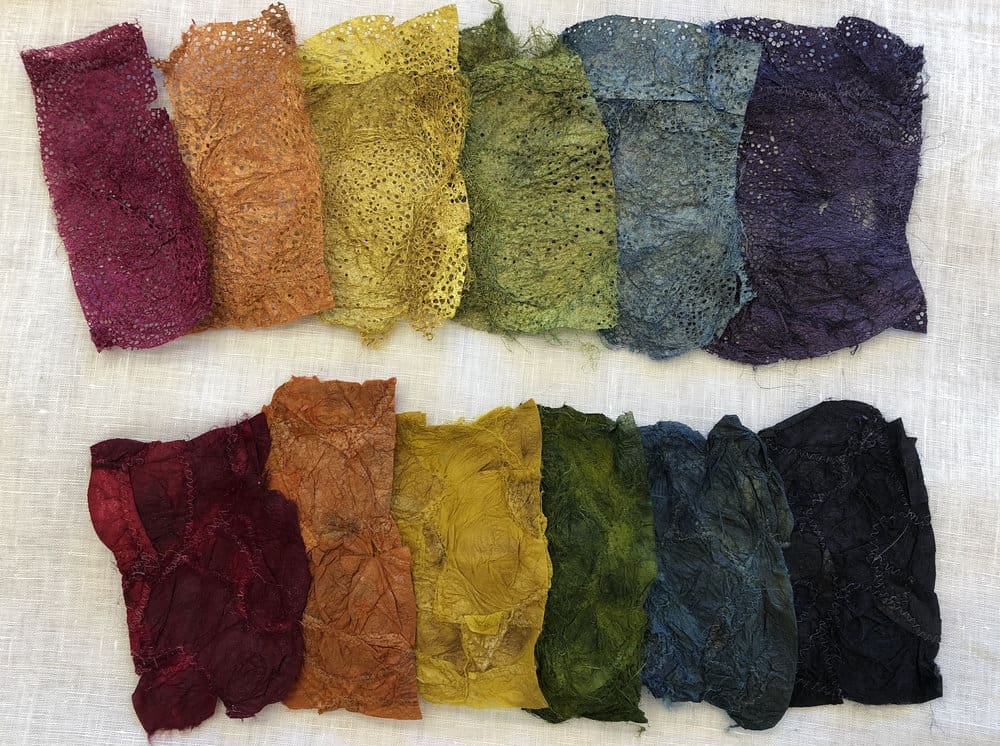Cay started the CPALI organization with the goal of developing a new conservation business based on native resource farming and in particular for people living around a large protected area in northeastern Madagascar. They invented “cocoon-silk” because they didn’t want to compete with 2000 years of spun and dyed silks from Asia. The cocoon silk is made from cocoons spun by multiple wild species and each cocoon is sewn into textiles and dyed using Shibori and dip-dye techniques.
When I met Cay they had only been using synthetic/acid dyes with the fibers and I was very curious and excited to dye the fibers with natural dyes and more importantly help the team understand what natural dyes were growing in their environment that they could farm or forage and use for dyeing their fibers in the future. In talking with Cay in more detail she was interested in seeing the results and sent four different types of silk for me to try with natural dyes.
I decided that I wanted to see how traditional dyes would work on the fiber with a goal of creating a silk cocoon rainbow. The experiments were a success and yielded vivid, vibrant colors that are lush and magical on this uniquely gorgeous silk. I don’t use a lot of silk in my own textile work so I needed to study up on the fiber itself and referenced The Art & Science of Natural Dyes by Joy Boutrup and Catharine Ellis which is an incredible resource!
I learned that silk fibers in their raw state directly from the cocoon are double stranded, parallel protein fibers. The fibers are made of very crystalline fibron surrounded by sericin (silk gum). The Ta ‘Na ‘ ‘Na silk from Madagascar is not degummed and in its raw, natural state which is a stiff matte surface. It absorbs more dye because of the amorphous layer of sericin. In addition, this natural silk had not been thoroughly scoured so I scoured it in my typical method but it exhibits some irregular or spotty dyeing because it is binding unevenly due to the sericin that is present. However, this effect works beautiful with the sewn cocoon pieces. The silk held up well to steam ironing without any color changes or spotting. Silk is tolerant of alkalinity but when dipped into the organic indigo vat using Michael Garcia’s 1-2-3 method the fibers began to tear apart resulting in holes in the fiber. More tests and research needs to be done to determine the cause of this unique reaction.
There are four different type of cocoon silk fibers tested with the natural dyes. The natural dyes are all from Botanical Colors and each packet of the four silk fibers weighed 8 grams. I used the following recipes to achieve the colors.
Red = Cochineal: 8% wof
Purple = Logwood: 20% wof
Orange = Madder: 75% wof + 2% calcium carbonate
Yellow =Weld: 50% wof
Blue = Indigo: Organic 5 gallon vat created 3 years ago
Green = Indigo + Weld

Reference: https://www.bloomanddye.com/journal/madagascar-silk-cocoons

